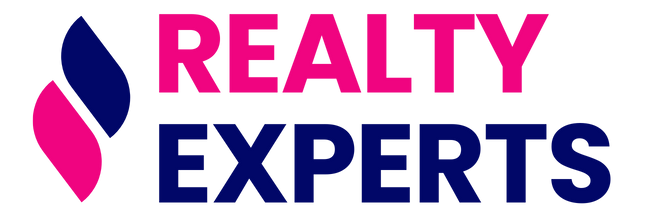How Standard Oil Became a Horizontally Integrated Monopoly: Strategies, Impact, and Lessons

Photo by Shivansh Sharma on Unsplash
Introduction: Understanding Horizontal Integration and Standard Oil
In the late 19th and early 20th centuries, Standard Oil emerged as the most powerful entity in the American oil industry. Its core business strategy- horizontal integration -allowed it to dominate the oil market by consolidating multiple oil refineries under its control. This approach not only reduced competition but also enabled Standard Oil to wield unprecedented influence over prices, supply chains, and industry standards [2] . Understanding the mechanisms and implications of this strategy provides essential insights for anyone interested in business consolidation, monopoly formation, and competitive strategy.
Core Business Model: Refinery Consolidation and Market Control
The core business that made Standard Oil a horizontally integrated monopoly was its aggressive acquisition and consolidation of competing oil refineries. By buying out other refineries operating at the same stage of production, Standard Oil could control a vast majority of oil refining in the United States, eventually holding sway over 90% of the market by the early 1900s [3] . This consolidation meant that Standard Oil was able to:
- Reduce competition -eliminating rivals and establishing market dominance.
- Set prices -with little to no competition, the company could dictate pricing in the market.
- Achieve economies of scale -by streamlining operations and cutting redundant costs across refineries.
For entrepreneurs and business leaders, this example highlights the importance of strategic acquisition and the risks associated with market concentration.
Step-by-Step: How Standard Oil Built Its Monopoly
To replicate a horizontally integrated strategy or understand its implementation, consider the following steps derived from Standard Oil’s historical approach:
- Identify competitor businesses operating at the same production level. For Standard Oil, these were other oil refineries.
- Acquire or merge with these competitors. Rockefeller’s team systematically purchased or merged with dozens of refineries, consolidating them under one corporate entity [2] .
- Streamline operations to reduce costs and maximize efficiency. Standard Oil integrated management, logistics, and distribution to eliminate redundant processes.
- Leverage market dominance to negotiate favorable terms with suppliers and distributors. Standard Oil could demand better rates from railroads and raw material suppliers, further entrenching its position [3] .
- Expand geographic and product reach. The company used its consolidated power to enter new markets and diversify product offerings.
These steps are applicable to modern business scenarios, though legal and ethical considerations-such as antitrust regulations-must now be carefully accounted for.
Real-World Example: Standard Oil’s Impact on the U.S. Oil Market
By 1904, Standard Oil controlled 90% of oil production and 85% of final sales in the United States [2] . Its dominance led to the formation of a powerful trust, influencing everything from drilling and refining to distribution and sales. This control brought significant benefits to the company, including:
- Lower production costs due to scale and efficiency.
- Greater bargaining power with suppliers and distributors.
- Ability to set industry standards and practices.
However, these successes came at a cost: public backlash, regulatory scrutiny, and eventually, government intervention. The Sherman Antitrust Act of 1890 was enacted to curtail such monopolistic practices, leading to the breakup of Standard Oil in 1911.
Challenges and Solutions: Navigating Business Consolidation Today
While horizontal integration offers clear advantages, it presents significant challenges:
- Legal and regulatory risks -Antitrust laws now heavily regulate consolidation to prevent monopolies.
- Public perception and ethical concerns -Excessive market control can lead to negative publicity and consumer distrust.
- Integration difficulties -Merging diverse company cultures and systems can be complex and costly.
To address these challenges, businesses should:
- Consult with legal experts before pursuing mergers or acquisitions.
- Maintain transparency with stakeholders and communicate the benefits of integration.
- Invest in robust change management processes to ensure operational alignment.
For those seeking to implement horizontal integration, start by analyzing your industry’s competitive landscape and identifying acquisition targets that align with your strategic goals. Consider searching for guidance through your local Chamber of Commerce, the Federal Trade Commission (FTC), or established business consulting firms for compliance and due diligence support.

Photo by Sankalp Mudaliar on Unsplash
Alternative Approaches to Market Expansion
While Standard Oil focused on horizontal integration, other strategies exist for increasing market power:
- Vertical integration -acquiring suppliers or distributors to control the supply chain.
- Strategic alliances -forming partnerships with other businesses without full ownership.
- Organic growth -expanding through internal innovation and market development.
Each approach offers distinct advantages and challenges, depending on industry structure and company objectives. Modern companies often blend horizontal and vertical strategies for optimal results; for example, tech giants acquire competitors and integrate new technologies while also investing in supply chain control.
Accessing Guidance and Support for Business Integration
If you are considering horizontal integration for your business, comprehensive guidance is available through several pathways:
- Contact your local Chamber of Commerce for information about mergers, acquisitions, and regulatory compliance.
- Consult the Federal Trade Commission (FTC) for antitrust guidelines; search for “FTC horizontal integration guidance” on the official FTC website.
- Engage with established business consulting firms that specialize in mergers and acquisitions for expert advice.
When searching for resources, use specific terms such as “horizontal integration”, “merger due diligence”, or “antitrust compliance” to find reputable sources. You may also consider attending industry seminars or webinars through professional organizations to stay updated on best practices and legal developments.
Key Takeaways for Modern Businesses
Standard Oil’s horizontally integrated monopoly was built on the strategic acquisition and consolidation of oil refineries, granting it unprecedented market power and operational efficiency [2] [3] . While this approach offers compelling advantages, today’s regulatory environment demands careful planning, legal compliance, and ethical consideration. For those interested in leveraging horizontal integration, begin with a thorough competitive analysis, seek professional guidance, and ensure that all transactions align with current laws and industry standards.
References
MORE FROM realtyexperts.ai













